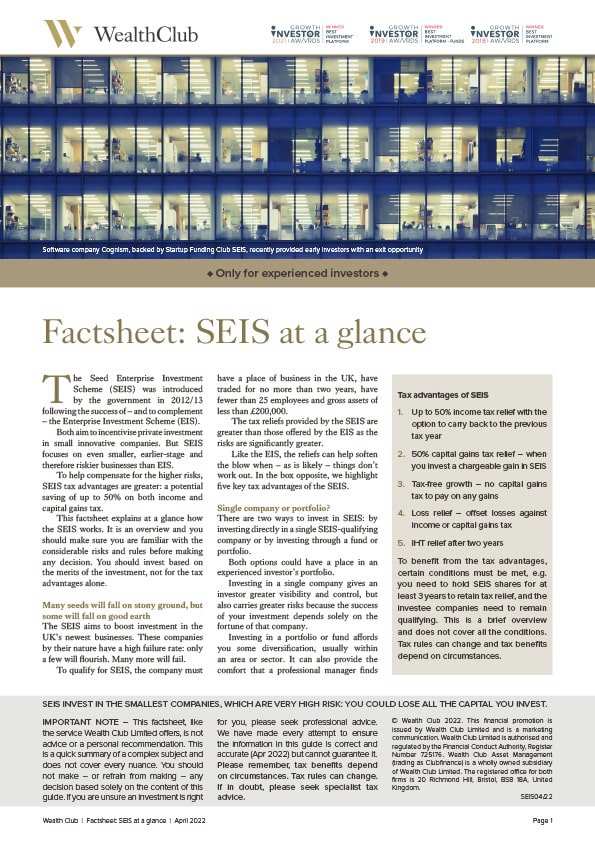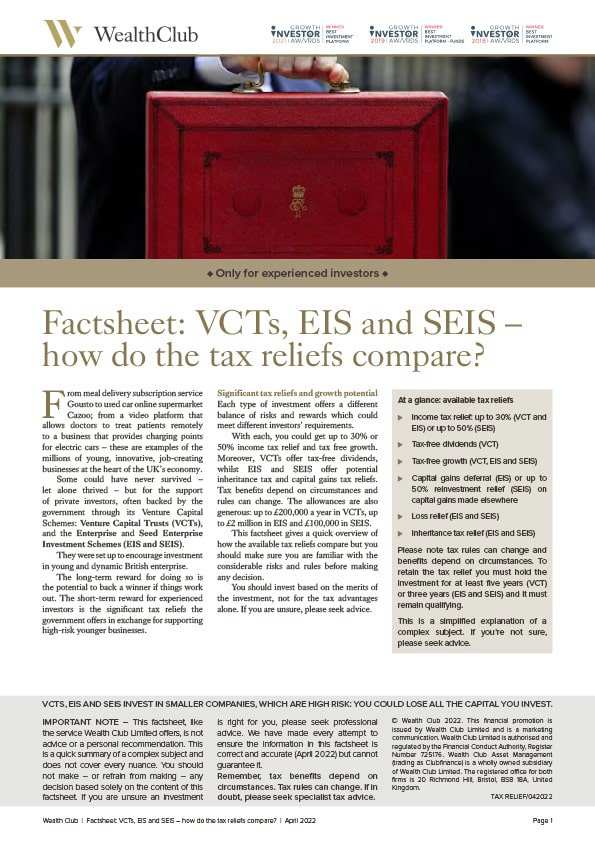Haatch SEIS Fund
This fund is managed by four successful entrepreneurs with first-hand experience of successfully founding, growing and selling businesses. It invests in sectors the team knows well, such as software-as-a-service, on-demand, gig economy and digital consumer.



